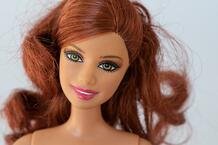Figures of speech are literary devices which are used to convey ideas that go beyond their literal meaning. In English, there are more than 200 different types of figures of speech.
The apostrophe Figure of Speech is one of them.

Apostrophe Figure of Speech Meaning
An apostrophe is a direct address to an absent person or a non-living thing. The character isolates himself or herself from reality and evokes the thing or the person.
Daily Grammar Test - Attempt Now
- Hello, darkness my old friend. (Here the word ‘darkness‘ is addressed as if it were a real person.)
- Dear God. Are you listening? (The person is addressing God directly.)
Examples of Apostrophe Figure of Speech
Popular Examples of Apostrophe Figure of Speech are as follows:
“Is this a dagger which I see before me,
The handle toward my hand?
Come, let me clutch thee!
I have thee not, and yet I see thee still.”
—Shakespeare, Macbeth
“Death be not proud, though some have called thee
Mighty and dreadful, for, thou art not so”
—John Donne, Death Be Not Proud
“O holy virgin! clad in purest white,
Unlock heav‘n‘s golden gates, and issue forth”
—William Blake, To Morning
“Oh! Stars and clouds and winds, ye are all about to mock me”
—Mary Shelly, Frankenstein
“O wind, rend open the heat,
cut apart the heat,
rend it to tatters.”
—Hilda Doolittle, Heat
